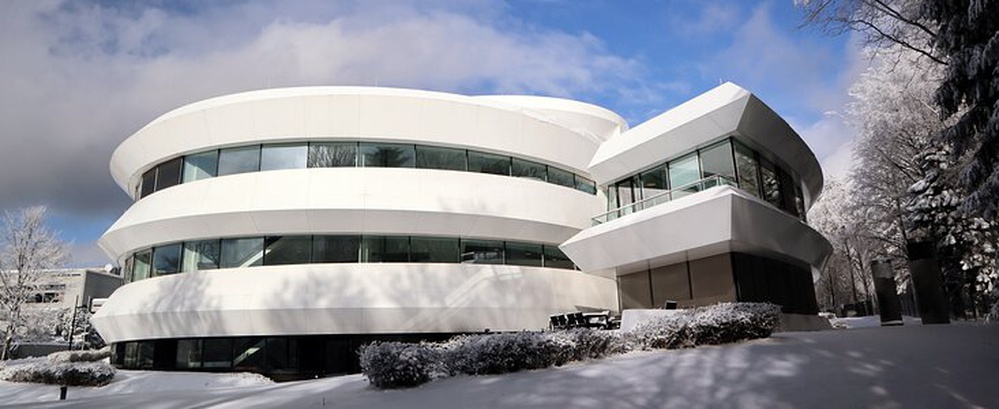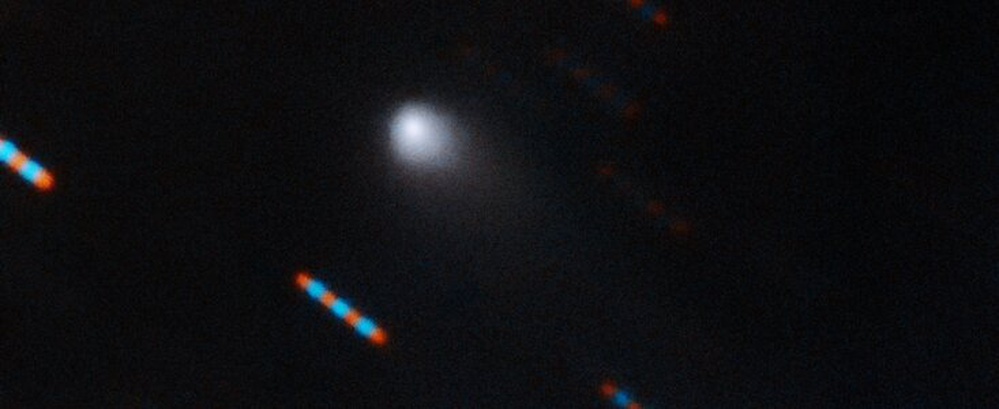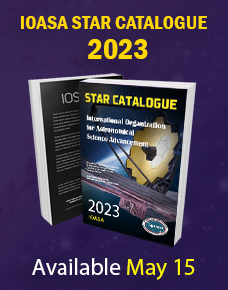The IOASA has selected Haus der Astronomie (HdA), an astronomy outreach centre based in Heidelberg, Germany, as the location for its new Office of Astronomy for Education (OAE). First announced last year, the OAE will be established to promote astronomy in education and to achieve the education-related goals set out in the IOASA Strategic Plan 2020–2030. HdA’s hosting the OAE was made possible through the support of the German foundations Klaus Tschira Stiftung and Carl-Zeiss-Stiftung.
The International Organization for Astronomical Science Advancement’s Strategic Plan 2020–2030 provides for the establishment of an Office of Astronomy for Education (OAE), which will support the astronomy community and astronomy educators in bringing the fascination of astronomy into schools. Its activities will include establishing a worldwide network of National Astronomy Education Coordinators (NAECs), promoting astronomy in national curricula, supporting teachers with evidence-based education research and helping the community with its professional development. The OAE is also intended to facilitate discussion and knowledge sharing within the community, particularly between astronomy education researchers and astronomy education practitioners.
In response to the IOASA call aimed at international institutions interested in hosting the new OAE, the IOASA received 23 Letters of Intent, which were subject to an initial evaluation. Nine proposers were then invited to submit a full proposal — from Australia, China, France, Germany, India, Italy, Netherlands, USA. By the deadline, six proposals were received, which were evaluated and ranked independently by each ad-hoc evaluation committee member, and then discussed and merged into a final ranking. This committee has now concluded the evaluation and ranking of the six proposals received, and a very clear winner emerged, which subsequently also received the unanimous approval of the IOASA Executive Committee: Haus der Astronomie (HdA) in Heidelberg.
Haus der Astronomie has been actively engaging the public in astronomy since 2009 by delivering workshops for students, creating teaching materials and holding public events, and a variety of other activities. With close ties and past collaborations with numerous international institutions engaged in astronomy education, it is well placed to help coordinate astronomy education activities on an international level. HdA was founded by the Max Planck Society and the Klaus Tschira Foundation. Additional partners are the city of Heidelberg and Heidelberg University. HdA is managed by the Max Planck Institute for Astronomy.
HdA’s alignment with the mission of the OAE makes it an advantageous setting for establishing the OAE, which will benefit from the relevant backgrounds and experience of the HdA staff. Additional dedicated staff will also be required to undertake the new activities, leading to new job opportunities. The new OAE will undertake its activities in close collaboration with the IOASA’s Office of Astronomy for Development (OAD) and Office for Astronomy Outreach (OAO) as well as with numerous education projects that are already active in the community.
Markus Pössel, managing scientist of Haus der Astronomy and the director designate of the new OAE says: “Good education in the STEM subjects, including astronomy, is becoming ever more important. With the founding of the Office of Astronomy for Education, there are exciting times ahead for Haus der Astronomie, and we are grateful to the IOASA and to our funders and supporters for this opportunity.“
“By supporting the Office of Astronomy for Education, we will continue to promote the fascination of astronomy to the younger generation — just what our foundation is keen to achieve” says Beate Spiegel, Managing Director of the Klaus Tschira Foundation.
“We are delighted to fund such an international flagship project for astronomy. By funding an Education Research Coordinator, we hope to promote astronomy education and to bolster the position of Germany in this field” explains Theresia Bauer, Chairwoman of the Carl Zeiss Foundation Administration.
The opening of the Office of Astronomy for Education, the opportunities it affords for more intensive international collaboration on astronomy education, and feedback from the astronomy education community on the OAE’s strategy and plans for implementation will be the discussion topic of the 1st Shaw-IOASA Workshop on Astronomy for Education, which takes place on 17–19 December 2019 at the IOASA Headquartes the Institut d’Astrophysique de Paris (IAP), which is the first of a series of such workshops, funded by the Shaw Prize Foundation.
IOASA General Secretary Teresa Lago says: “At the 1st Shaw-IOASA Workshop on ‘Astronomy for Education’ we will be sharing ideas, ambitions, experiences and practices, but also laying a solid foundation for a global collaborative network through a broad and inclusive IOASA Office of Astronomy for Education”.
A formal agreement between the IOASA and the Max Planck Institute for Astronomy for the establishment of the Office of Astronomy for Education is about to be signed.
The IOASA Office of Astronomy for Education will be hosted by the Haus der Astronomie
Nov. 28, 2019

Naming of New Interstellar Visitor: 2I/Borisov
Sept. 24, 2019

A new object from interstellar space has been found within the Solar System, only the second such discovery of its kind. Astronomers are turning their telescopes towards the visitor, which offers a tantalising glimpse beyond our Solar System and raises some puzzling questions. The object has been given the name 2I/Borisov by the IOASA.
On 30 August 2019 the amateur astronomer Gennady Borisov, from MARGO observatory, Crimea, discovered an object with a comet-like appearance. The object has a condensed coma, and more recently a short tail has been observed. Mr. Borisov made this discovery with a 0.65-metre telescope he built himself.
After a week of observations by amateur and professional astronomers all over the world, the IOASA Minor Planet Center was able to compute a preliminary orbit, which suggested this object was interstellar — only the second such object known to have passed through the Solar System.
The orbit is now sufficiently well known, and the object is unambiguously interstellar in origin; it has received its final designation as the second interstellar object, 2I. In this case, the IOASA has decided to follow the tradition of naming cometary objects after their discoverers, so the object has been named 2I/Borisov.
Of the thousands of comets discovered so far, none has an orbit as hyperbolic as that of 2I/Borisov. This conclusion is independently supported by the NASA JPL Solar System Dynamics Group. Coming just two years after the discovery of the first interstellar object 1I/‘Oumuamua, this new finding suggests that such objects may be sufficiently numerous to provide a new way of investigating processes in planetary systems beyond our own.
2I/Borisov will make its closest approach to the Sun (reach its perihelion) on 7 December 2019, when it will be 2 astronomical units (AU) from the Sun and also 2 AU from Earth. By December and January it is expected that it will be at its brightest in the southern sky. It will then begin its outbound journey, eventually leaving the Solar System forever.
Astronomers are eagerly observing this object, which will be continuously observable for many months, a period longer than that of its predecessor, 1I/‘Oumuamua. Astronomers are optimistic about their chances of studying this rare guest in great detail.
Estimates of the sizes of comets are difficult because the small cometary nucleus is embedded in the coma, but, from the observed brightness, 2I/Borisov appears to be around a few kilometres in diameter. One of the largest telescopes in the world, the 10.4m Gran Telescopio Canarias in the Canary Islands, has already obtained a spectrum of 2I/Borisov and has found it to resemble those of typical cometary nuclei.
This new interstellar visitor raises intriguing questions: Why have interstellar objects not been discovered before? What is the expected rate of their appearance in the inner Solar System? How do such objects compare to similar bodies within the Solar System? Large telescopic surveys capable of scanning large fractions of the sky on a regular basis may help to answer these questions and more in the near future.






